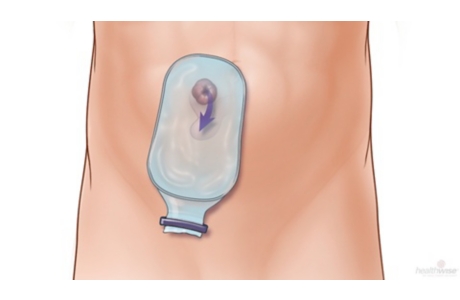Bowel Resection
Surgery Overview
Resection is another name for any operation that removes tissue or part of an organ. Bowel resection, also called partial colectomy, removes a diseased or damaged part of the colon or rectum. Bowel resection can be done for many diseases that affect the colon, such as colorectal cancer, diverticulitis, or Crohn’s disease.
The goal of bowel resection is to take out the part of the colon or rectum where the problem is. If the doctor is removing cancer from the colon, nearby lymph nodes are taken out and tested for cancer. Then healthy parts of the colon or rectum are sewn back together. Bowel resection is done either by opening the abdomen (open resection) or by laparoscopy.
Laparoscopy for bowel resection usually involves 3 to 6 very small incisions instead of one large one. Recovery time is faster.
You and your doctor will think about several things in deciding whether you should have open resection or a laparoscopy. These include:
- The location and extent of the disease.
- Your general health.
- Whether you have scar tissue in the area from previous surgery.
- Your doctor’s expertise and experience.
Sometimes a laparoscopic surgery has to be changed to an open resection during the surgery.
What To Expect
Bowel resection requires general anesthesia. You may stay in the hospital for 4 to 7 days or as long as 2 weeks after surgery.
Sometimes the two parts of the colon or rectum cannot be reattached, so the surgeon performs a colostomy. This creates an opening, called a stoma, on the outside of the body for the stool, or feces, to pass through into a colostomy bag. Usually the colostomy is temporary, until the colon or rectum heals. If the lower part of the rectum has been removed, the colostomy is permanent.
When the two-stage operation is done, the time between operations is usually 6 to 12 weeks.
The recovery time after a one-stage operation or after the final operation of a two-stage surgery is usually 6 to 8 weeks.
Why It Is Done
Bowel resection may be done to remove cancer or when the colon cannot function normally because of damage or disease. You may need a bowel resection if you have:
- A bowel obstruction.
- Colon cancer.
- Crohn’s disease.
- Diverticulitis.
How Well It Works
Bowel resection is the most successful treatment for invasive colorectal cancer.
Up to 12 out of 100 people who have surgery for diverticulitis develop diverticulitis again.footnote 1 But another surgery is usually not needed.
Some people who have two-stage surgeries may not have the second part of the surgery to reattach the intestine and repair the colostomy. This is often because the intestine does not heal well enough to be rejoined.footnote 2
Surgery is not a cure for Crohn’s disease. When surgery for Crohn’s is needed, as little of the intestine as possible is removed to keep the intestines working normally. The disease tends to return to other areas of the intestines after surgery. In children, surgery may improve well-being and quality of life and restore normal growth and sexual development.
Risks
All surgeries have some risks of infection, severe bleeding, or complications from general anesthesia.
Possible problems after a bowel resection include:
- Scar tissue (adhesions).
- A leak between the joined sections of the colon.
- Injury to the bladder, ureters, or blood vessels.
What To Think About
This operation does not usually cause problems, even in older people. Age should not be a reason to avoid having a bowel resection.
People who have colostomies need instructions about caring for the collection bag and about dietary changes that can reduce odor and gas. They also need emotional support, because many people find having a colostomy embarrassing.
References
Citations
- Davis BR, Matthews JB (2006). Diverticular disease of the colon. In M Wolfe et al., eds., Therapy of Digestive Disorders, 2nd ed., pp. 855–859. Philadelphia: Saunders Elsevier.
- Harford WV (2010). Diverticulosis, diverticulitis, and appendicitis. In EG Nabel, ed., ACP Medicine, section 4, chap. 12. Hamilton, ON: BC Decker.
Credits
Current as of: November 7, 2018
Author: Healthwise Staff
Medical Review:Adam Husney, MD – Family Medicine & Kathleen Romito, MD – Family Medicine & Kenneth Bark, MD – General Surgery, Colon and Rectal Surgery
Current as of: November 7, 2018
Author: Healthwise Staff
Medical Review:Adam Husney, MD – Family Medicine & Kathleen Romito, MD – Family Medicine & Kenneth Bark, MD – General Surgery, Colon and Rectal Surgery
This information does not replace the advice of a doctor. Healthwise, Incorporated, disclaims any warranty or liability for your use of this information. Your use of this information means that you agree to the Terms of Use. Learn how we develop our content.





